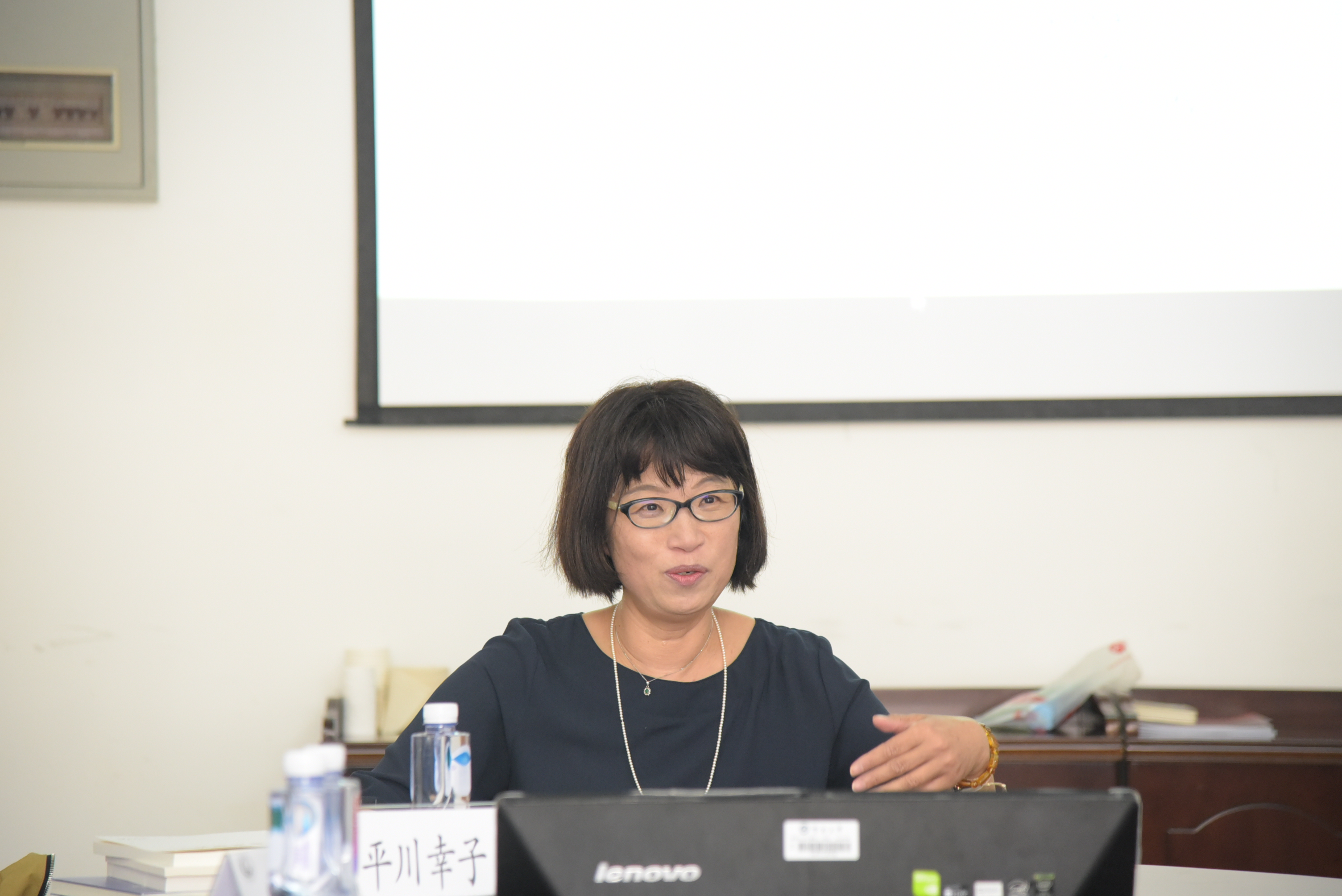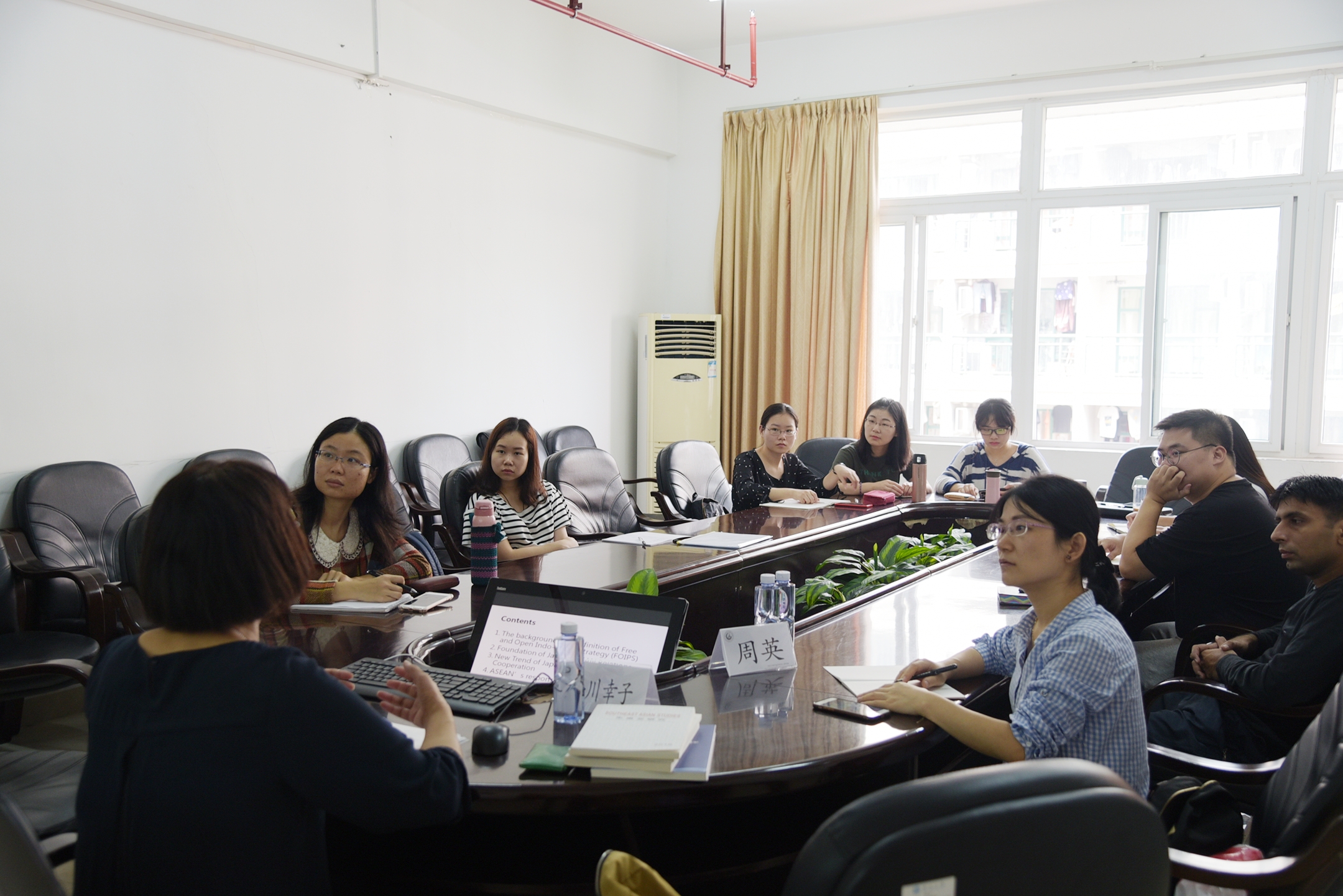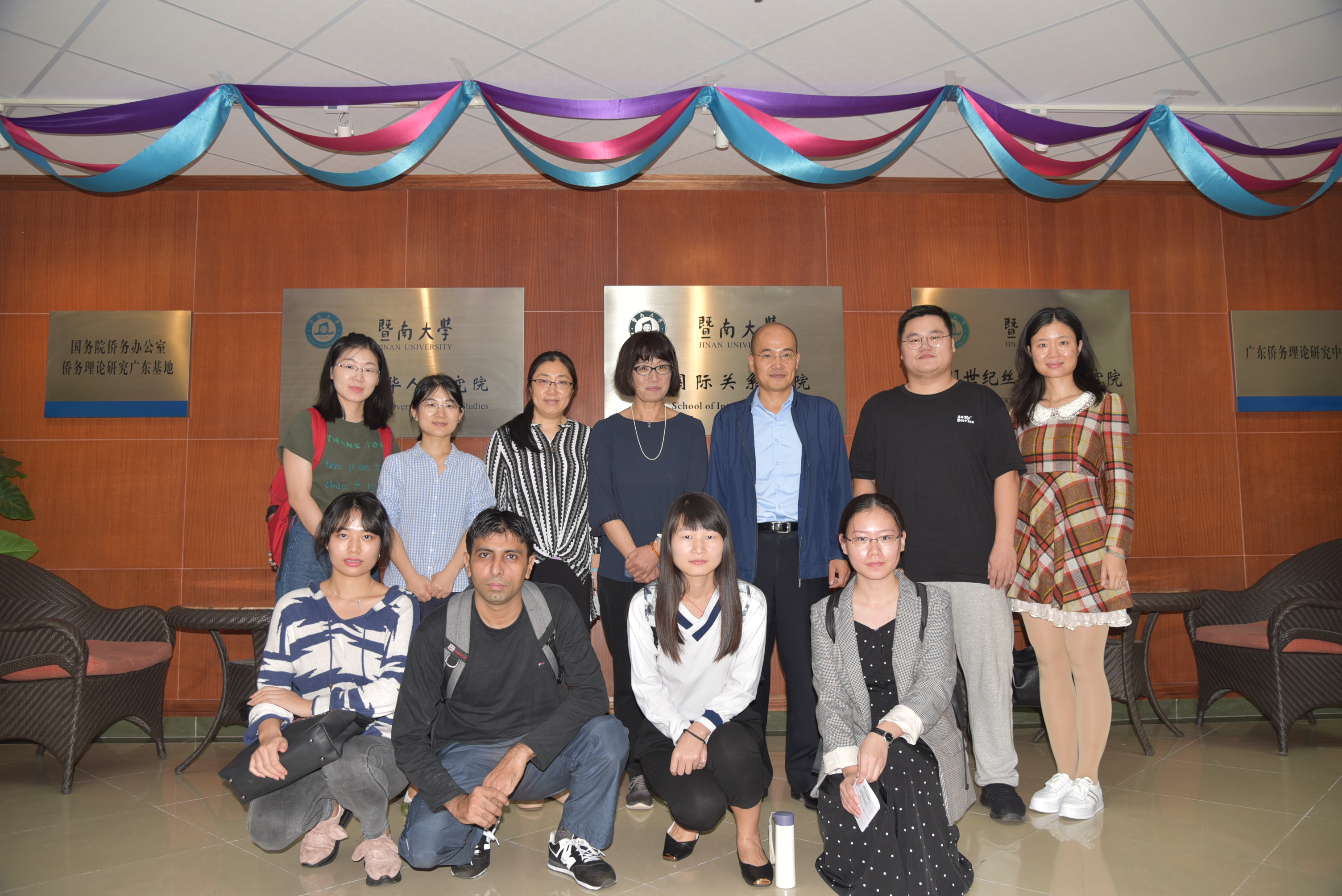
日本早稻田大学亚太研究生院副教授平川幸子来访我院
(通讯员:王芳)10月25日下午,日本早稻田大学亚太研究生院副教授平川幸子,做客天下论坛第一百八十四期,为我院师生带来一场主题为“Japan-ASEAN Cooperation in the Free and Open Indo-Pacific Strategy”的精彩讲座。讲座由周英副教授主持。

平川幸子副教授正在演讲
平川教授从介绍“自由开放的印太战略”(FOIPS)的背景和定义入手,主要讲述了日本-东盟关系的基础、日本-东盟合作的新趋势以及东盟的焦虑和回应几个方面的内容。首先,她讲到FOIPS的三大支柱即法治、经济繁荣、和平与稳定,并认为印度太平洋地区可以开发为“公共产品”。接着,她就安倍与麻生首相期间的政策与战略分析FOIPS的起源,并从1973年建立日本-东盟论坛、日本与东盟关系的发展来深入探讨对FOIPS的影响。随后,平川教授以日本东盟政策的五项原则为切入点,重点讲述了加强日本在“Maritime Asia”的存在和领导地位、倡导规范和原则等日本与东盟合作的新趋势。最后,她分析了FOIPS战略背景下东盟方面可能出现的破坏东盟的中心地位、外部力量的介入、中美日关系的挑战与担忧,并表示中国在印太地区也有着重要的作用,日本与中国可以展开相关的合作。

师生认真听讲
讲解结束后,平川教授就师生们提出的日本与东盟关系历史与现状的区别以及日本与中国在印太地区的作用等问题作出回答,现场气氛热烈。通过此次讲座,大家对日本与东盟的关系有了更深的认识,收获颇丰。

与会师生合影
嘉宾简介:
Sachiko Hirakawa(平川幸子)is Associate Professor at Center for International Education andLecturer at Graduate School of Asia-Pacific Studies at Waseda University. She specializes in international politics in East Asia, Asian regional integration, Sino-Japan relations. She received B.A. in Economics from Waseda University, MALD (Master of Art in Law and Diplomacy) from Fletcher School of Law and Diplomacy, Tufts University, USA, and Ph.D in International Studies from Graduate School of Asia-Pacific Studies, Waseda University. Before her current position, she was Assistant Professor at School of International Liberal Studies and Graduate School of Asia-Pacific Studies at Waseda University. Her recent publications include; “China’s Energy Policy and Regional Diplomacy: Central Asia as a Model of ‘Belt and Road Initiative,”Journal of Asia-Pacific Studies, No.30 (in Japanese, Feb 2018), “A Liberal Asia-Pacific Regional Order and Japan’s Diplomacy: More Light on the ASEAN Community and Taiwan,”Issues and Studies, Vol 46, no.3 (in Japanese, 2017), “Japan: Living in and with Asia”, Lee Lai To and Zarina Othman eds., Regional Community Building in East Asia: Countries in Focus (Routledge, 2016),“Southeast Asia in the Post-war Period: The origins and crossroads of Bandung, non-alignment and ASEAN,” S. Amako et al, Regional Integration in East Asia: Theoretical and Historical Perspectives, (United Nations University Press, 2013), Two-China Dilemma and Japanese Formula: Diplomatic Framework for Solution (in Japanese, Keiso Shobo 2012).
国际关系学院/华侨华人研究院
2018年10月27日
